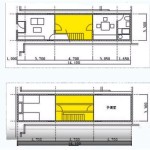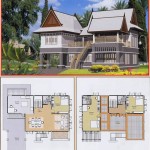Essential Aspects of Civil Engineering Building Plans
Civil engineering building plans are blueprints that serve as a foundation for the construction and maintenance of structures. They provide detailed information about the design, materials, and specifications for a building, ensuring its safety, functionality, and aesthetic appeal.
Content of Building Plans
Civil engineering building plans typically include the following sections:
- Site Plan: Outline the building's location, orientation, and surrounding infrastructure.
- Floor Plans: Show the layout and dimensions of each floor, including rooms, walls, windows, and doors.
- Elevations: Provide vertical views of the building's exterior, showing its height, proportions, and facade details.
- Sections: Cut-away views that display the building's interior structure, including foundations, walls, and roofs.
- Details: Close-up drawings of specific elements, such as staircases, railings, and cabinetry.
- Specifications: Written descriptions of the materials, finishes, and construction methods to be used.
Importance of Building Plans
Building plans are essential for several reasons:
- Communication: They provide a shared understanding among architects, engineers, contractors, and other stakeholders involved in the construction project.
- Compliance: Plans help ensure compliance with building codes and regulations, which are in place to ensure safety and quality.
- Cost Management: Accurate plans allow for accurate cost estimation and budgeting, avoiding unexpected expenses during construction.
- Construction Efficiency: Well-prepared plans facilitate efficient construction processes, minimizing delays and errors.
- Maintenance: Detailed plans serve as a valuable reference for building maintenance and repair work throughout the building's lifecycle.
Collaboration and Coordination
Creating effective building plans requires collaboration between architects, civil engineers, and other specialists. Architects typically focus on the building's design and aesthetics, while civil engineers ensure structural integrity and compliance with building codes. Together, they work to create plans that meet both functional and aesthetic requirements.
Conclusion
Civil engineering building plans are the backbone of successful construction projects. By providing a comprehensive guide to the design and construction of a building, they ensure safety, functionality, and aesthetic appeal. Clear communication, accurate detail, and collaboration among project stakeholders are essential for creating effective building plans that support the successful completion of construction projects.

Column Layout For A Residence Civil Engineering Modern House Floor Plans Simple Design

Plan And Visualization Of Two Story Building Performed By Civil Scientific Diagram

House Plans Home Residential

Best 2024 House Design Idea For 30 By Feet Civil Engineering S

How To Read Civil Engineering Drawing House Plans

Diffe Types Of Building Plans The Constructor

Floor Plan Wikipedia

Residential Building Planning Civil Engineer

30 X40 East Face Plan How To House Plans Building Construction

Diffe Types Of Building Plans The Constructor








